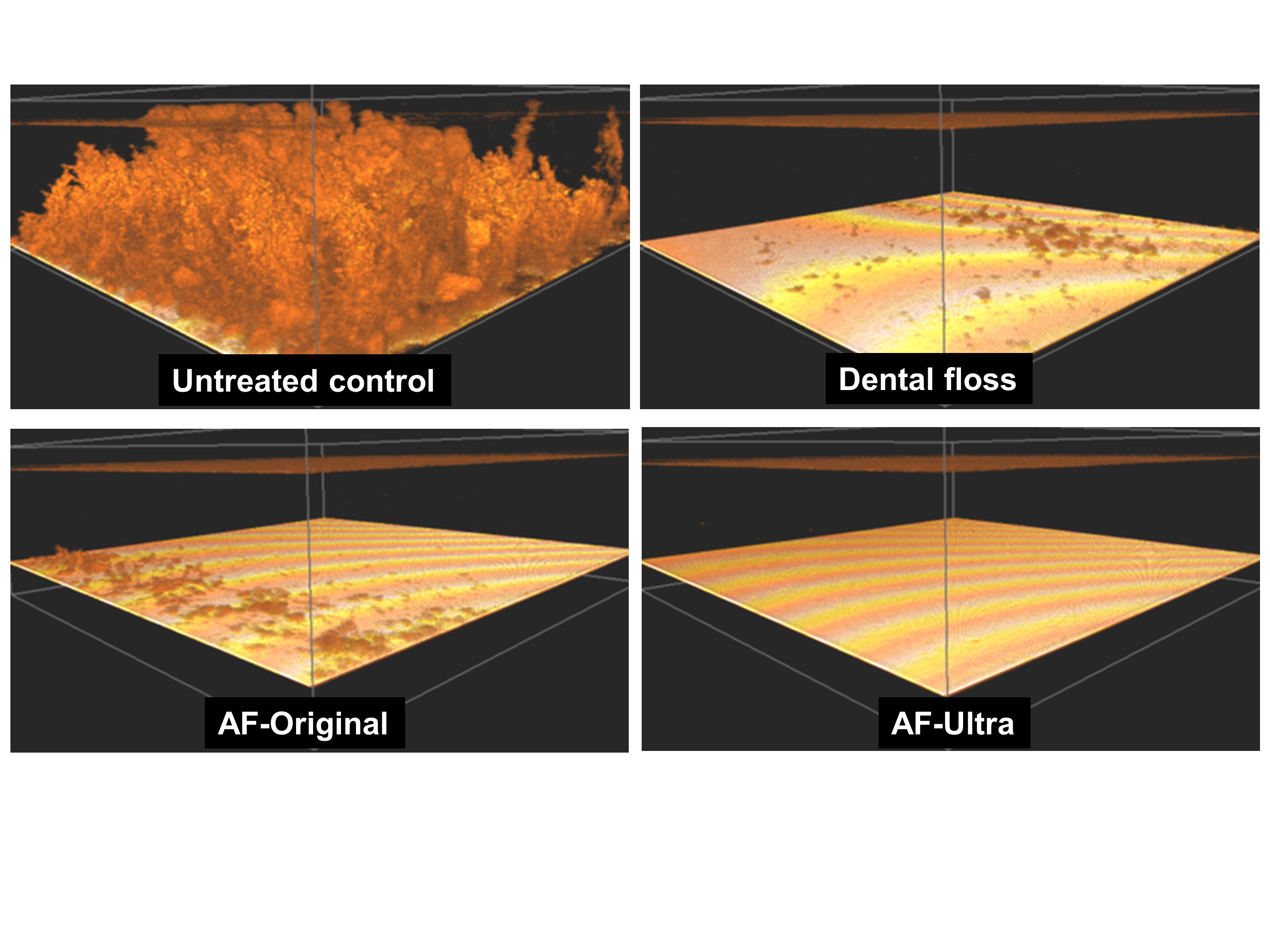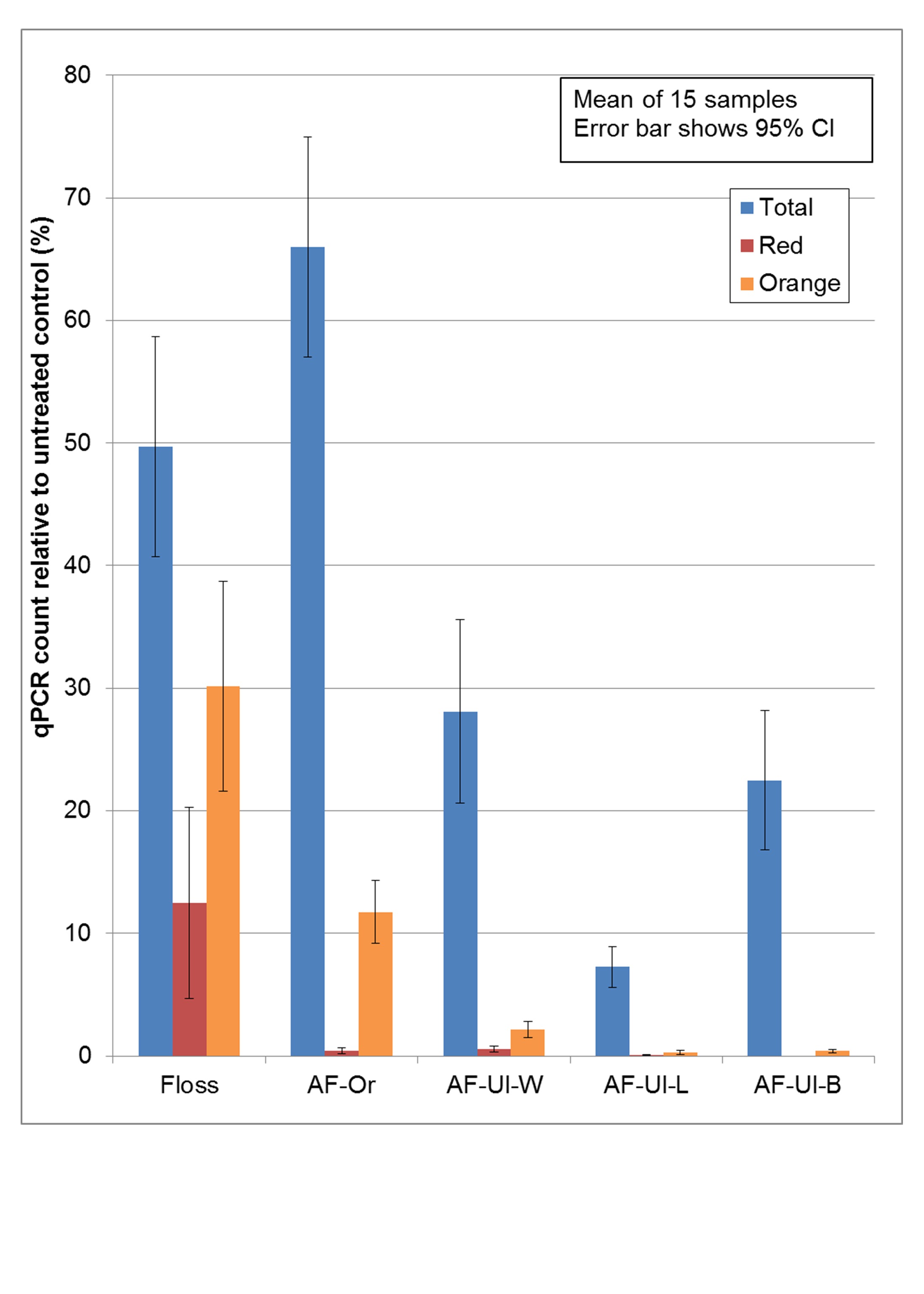IADR Abstract Archives
Oral biofilm regrowth after AirFloss Ultra treatment, comparison to floss and the original AirFloss
Objectives: The Philips Sonicare AirFloss Interdental (AF-Or) employs a microburst of air and water droplets for interdental cleaning, and has been available for some years. Recently a second generation, the AirFloss Ultra (AF-Ul) was introduced, clinically proven as effective as floss for gum health, when used with mouthwash. To study the underlying mechanisms of the clinical observations, we have investigated the removal and regrowth of plaque biofilm after AF-Ul treatment compared to dental floss and AF-Or in vitro.
Methods: Saliva/plaque based oral biofilms (n=15/group/analysis time) containing periopathogens from the red and orange Sokransky complexes were placed in a model interproximal space at a proximal surface, partially below the (artificial) gum line. After treatment they were regrown for 24h. Treatments: non-treated control; floss; AF-Or or AF-Ul, used with water, Listerine (Lis) or BreathRx (BRx) mouthwash. qPCR was used to determine the total amount and the amounts of specific red and orange complex bacteria. Biofilms were imaged using optical coherence tomography (OCT) and confocal laser scanning microscopy (CLSM).
Results: AF-Ul treatment left only very thin layers of biofilm, invisible for OCT (see figure 1). Viability staining showed on the CLSM that mouthwashes killed many remaining cells. 24h after treatment AF-Ul groups had statistically significantly less bacteria than floss and AF-Or treatments, with Lis being significantly better than water or BRx (see figure 2). Red complex bacteria were significantly more reduced when using AF compared to floss, with a complete absence for AF-Ul BRx. Orange complex bacteria amounts were significantly lower for AF-Ul compared to both floss and AF-Or.
Conclusions: On this in vitro model of dental plaque AirFloss Ultra shows superiority to dental floss and AirFloss Interdental in having lower plaque biofilm amounts with lower levels of periopathogens 24h after treatment, which may explain the excellent clinical results seen on gum health improvement.
Methods: Saliva/plaque based oral biofilms (n=15/group/analysis time) containing periopathogens from the red and orange Sokransky complexes were placed in a model interproximal space at a proximal surface, partially below the (artificial) gum line. After treatment they were regrown for 24h. Treatments: non-treated control; floss; AF-Or or AF-Ul, used with water, Listerine (Lis) or BreathRx (BRx) mouthwash. qPCR was used to determine the total amount and the amounts of specific red and orange complex bacteria. Biofilms were imaged using optical coherence tomography (OCT) and confocal laser scanning microscopy (CLSM).
Results: AF-Ul treatment left only very thin layers of biofilm, invisible for OCT (see figure 1). Viability staining showed on the CLSM that mouthwashes killed many remaining cells. 24h after treatment AF-Ul groups had statistically significantly less bacteria than floss and AF-Or treatments, with Lis being significantly better than water or BRx (see figure 2). Red complex bacteria were significantly more reduced when using AF compared to floss, with a complete absence for AF-Ul BRx. Orange complex bacteria amounts were significantly lower for AF-Ul compared to both floss and AF-Or.
Conclusions: On this in vitro model of dental plaque AirFloss Ultra shows superiority to dental floss and AirFloss Interdental in having lower plaque biofilm amounts with lower levels of periopathogens 24h after treatment, which may explain the excellent clinical results seen on gum health improvement.


